Black Friday Email Marketing Strategies to Maximize Sales in 2025
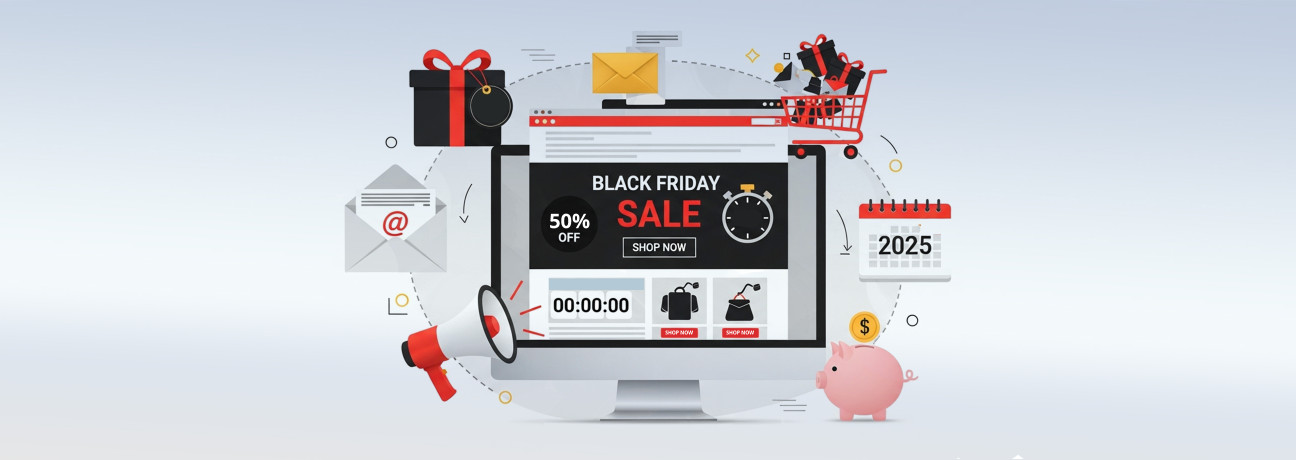
Table of Contents
Every November, inboxes become battlegrounds. With retailers and e-commerce brands vying for customer attention, Black Friday has become one of the most competitive times of year for email marketing. In 2024 alone, over 365 million emails were sent on Black Friday, averaging more than 250,000 per minute.
And yet, email remains the most effective way to reach eager shoppers. According to recent data, 56.5% of consumers prefer to receive Black Friday deals via email, far outpacing social media, SMS, or app notifications.
But here’s the truth: success doesn’t come from sending more emails. It comes from sending smarter ones.
To help you rise above the noise, we have compiled 10 proven Black Friday email marketing strategies. These tips will help you improve deliverability, boost conversions, and craft campaigns that truly grab attention and drive results.
TL;DR – Black Friday Email Marketing Strategies 2025
Black Friday is competitive for email marketing, but smart planning helps campaigns stand out. Success isn’t about sending more emails, but about sending the right emails to the right audience at the right time.
Key strategies to maximize results:
⭐
Start early: Build anticipation with teaser and early-access campaigns to engage subscribers before inboxes get crowded.
⭐
Clean and segment your list: Remove invalid and unengaged email addresses, and use behavioral or predictive segmentation to reach the targeted audience with relevant offers.
⭐
Craft compelling offers: Use VIP access, bundles, BOGO deals, free shipping, or charity incentives to drive engagement without relying solely on steep discounts.
⭐
Optimize for mobile and dark mode: Ensure emails display clearly on phones, with large CTAs, responsive images, and high-contrast text.
⭐
Focus on subject lines and timing: Use clear, personalized subject lines, test variations, and schedule sends when your audience is most likely to open.
⭐
Implement automation: Trigger emails based on actions like browsing, purchases, or cart abandonment, and use onboarding and holiday campaigns to maintain engagement.
⭐
Leverage supporting channels: SMS, push notifications, and social media to reinforce your email campaigns while keeping email as the primary channel.
⭐
Plan post-BFCM campaigns: Send thank-you emails, re-engagement messages, and follow-ups to maintain momentum and encourage repeat purchases.
Align each step of your Black Friday email campaigns from list management and design to automation to drive better conversions and build lasting customer loyalty.
Top 10 Email Marketing Strategies for Black Friday 2025
Ready to elevate your Black Friday email marketing campaign in 2025? Here are 10 proven strategies to help you stand out, drive engagement, and boost conversions. Let’s dive into each one in detail.
1. Start Early: Build Anticipation Before Black Friday
Black Friday campaigns no longer begin on Friday; they start weeks ahead. Consumers expect early access, exclusive previews, and personalized offers. Launching campaigns early allows brands to gradually prepare their audience, optimize email performance, and maintain consistent visibility before inbox competition peaks.
Why Early Campaigns Work
●
Builds Awareness and Engagement: It helps brands reach subscribers before promotional volume surges, allowing messages to get more visibility and higher engagement potential.
●
Supports Stronger Deliverability: Gradual email activity helps warm up domains and establish sender credibility. This ensures mailbox providers recognize your messages as trusted, improving inbox placement when it matters most.
●
Drives Early Conversions: Engaging subscribers before the main sale period captures their purchase intent and budget before they commit to competing offers.
Three-Phase Campaign Model
1. Teaser Phase (3–4 Weeks Before Black Friday)
Begin your campaign by building anticipation. Teaser emails should be concise, visually engaging, and spark curiosity without revealing too much. The goal is to create early excitement and motivate subscribers to sign up for early access or VIP lists.
Example:
Brooklinen launched an early Black Friday teaser with the subject line, “Black Friday on a Monday!? Yup. Deals Start Now.” The unexpected timing captured attention, generated buzz, and drove early traffic. By surprising subscribers ahead of competitors, the brand positioned itself early in the customer’s buying journey.
Tip: Teasers perform best when they focus on intrigue and exclusivity rather than discounts. Keep the tone light, build curiosity, and guide subscribers to take an action before the main sale begins.

2. Early Access Phase (1 Week Before Black Friday)
After building anticipation, reward your most loyal audience. Offer early access or exclusive deals to VIP customers and highly engaged subscribers. This phase strengthens customer relationships and drives conversions before the main sale opens.
Example:
Macy’s offered early access to its Black Friday deals exclusively to email subscribers. By prioritizing loyal customers, the brand increased initial engagement and captured early sales before the launch.
Best Practices:
●
Highlight Exclusivity: Subject lines like “You’re First in Line” or “Exclusive Early Access Starts Now” reinforce customer value and privilege.
●
Design for Action: Use bold CTAs, urgency cues, and simple layouts to help subscribers act immediately.
●
Time Your Sends Strategically: Schedule early-access campaigns two to three days before Black Friday to manage server load and prevent delays.
●
Keep Messaging Clear: In a crowded inbox, concise and direct phrasing outperforms creative ambiguity. Make the offer, benefit, and next step obvious at a glance.
Tip: Early-access emails build anticipation and action. By combining exclusivity with precise timing and a clear offer, brands can convert excitement into measurable revenue before the peak rush.
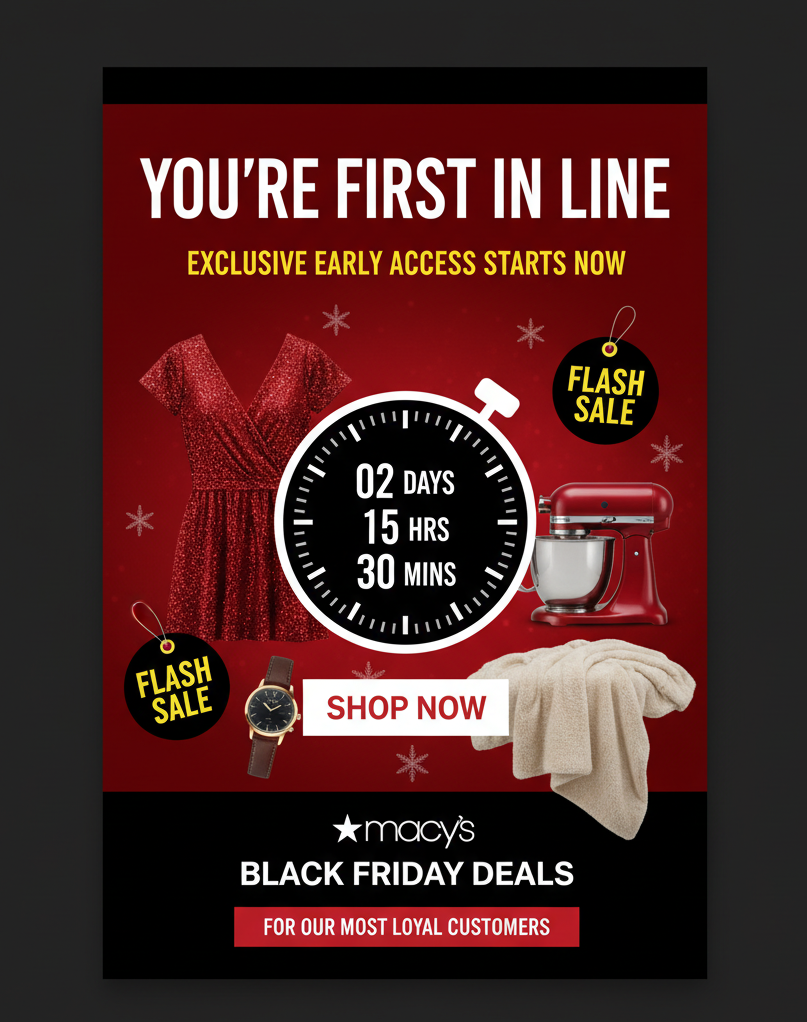
3. Main Event (Black Friday Day)
This is when urgency reaches its highest point. Messaging should be bold, visually dynamic, and designed for immediate conversions. Shoppers are making quick decisions, so clarity and timing are critical.
Use countdown timers, attention-grabbing headlines, and compelling CTAs to reduce friction between curiosity and purchase. Avoid vague phrases so readers instantly understand what’s offered and why it matters now.
Example:
Walmart’s Black Friday emails often feature subject lines like “Preview Deals up to 70% Off Now!” and banners showing online sales starting at 5 PM ET and in-store sales starting at 6 AM on 11/29. A countdown timer and a “SHOP NOW” button create a sense of urgency, while disclaimers such as “Limited quantities. While supplies last. No rain checks. Select items may not be available in-store” keep subscribers informed.
Tip: Even on the main event day, ensure smooth delivery by sending emails in batches across different segments and time zones. This reduces server load and minimizes the risk of delays.
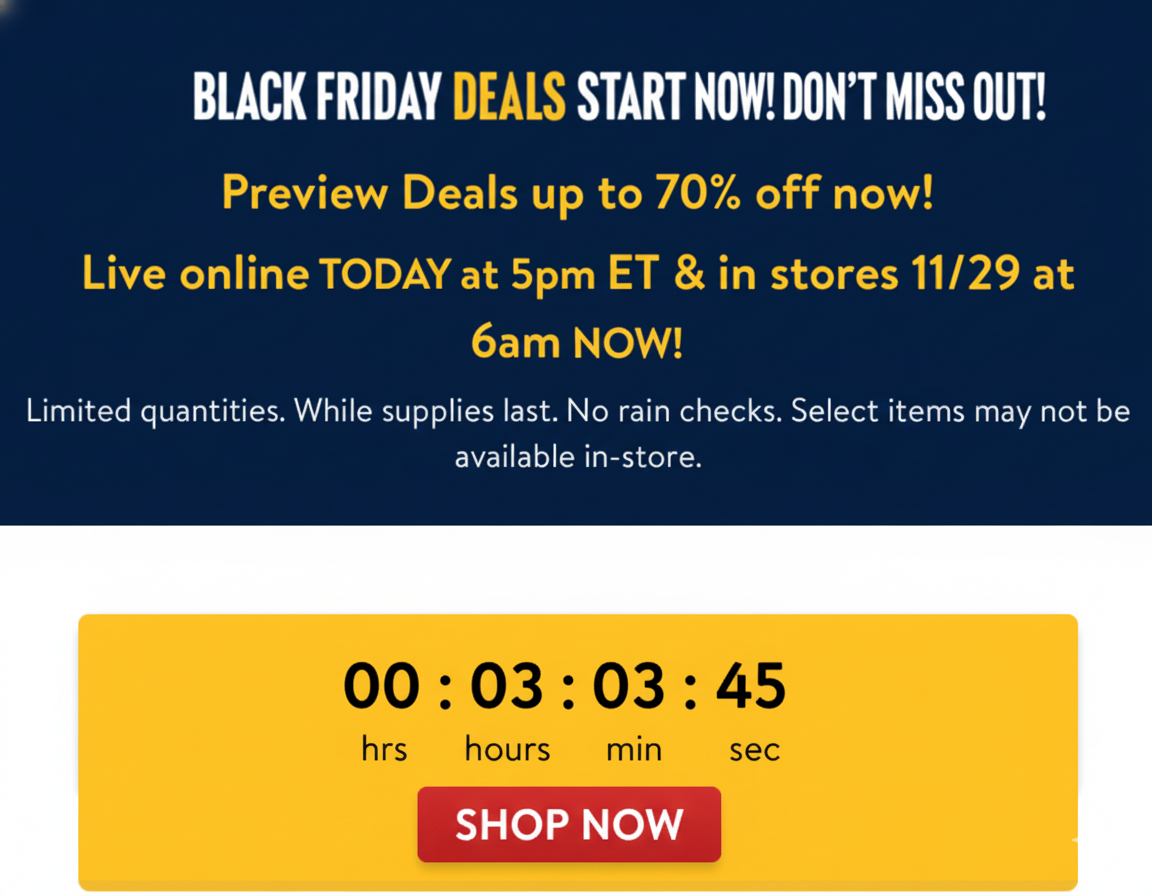
2. Keep Your Email List Clean
Before launching your Black Friday campaigns, make sure your emails reach valid, active inboxes. A clean email list isn’t just about removing invalid contacts. It is about protecting your sender reputation and maximizing your ROI.
Each year, up to 16.9% of email addresses become invalid. Users change jobs, abandon inboxes, or enter incorrect details. Sending to invalid addresses can hurt deliverability, trigger spam filters, and reduce engagement.
Bulk email verification tools help you find invalid email addresses before sending campaigns. Verified lists get higher open rates, fewer bounces, and stronger performance.
Here’s how to keep your list in top shape before the holiday rush:
⭐
Verify regularly: Before every new campaign, run your list through a bulk email verification tool to ensure every email address is valid and prevent bounces that hurt deliverability.
⭐
Re-engage or remove dormant subscribers: Identify email addresses that haven’t opened or clicked your emails in the past few months. Send a targeted re-engagement campaign before removing them completely.
⭐
Segment seasonal buyers: Identify and retain shoppers who interacted during last year’s Black Friday campaign; they often re-engage during the same seasonal sale periods.
Tip: Regular list hygiene ensures your Black Friday emails land in the real inbox. To learn more, read our blog [Why Email List Verification Is a Must-Have for E-commerce Brands] for a detailed look at how a verified list leads to successful campaigns.
3. Segment Your Subscribers
Not all holiday shoppers are the same. Some buy gifts for others. Others use discounts to purchase items they have wanted for months. Segmentation helps you identify these preferences and send personalized Black Friday emails to each group.
Key customer segments to consider for Black Friday emails include:
⭐
Subscribers who rarely open emails or engage with campaigns
⭐
First-time or occasional buyers
⭐
Seasonal shoppers who only purchase during the holiday season
⭐
VIP or highly loyal customers
⭐
Shoppers loyal to specific product categories
⭐
Customers who have shopped in-store recently
Example: Johnny Cupcakes, a U.S.-based apparel brand, used behavioral segmentation to target high-interest shoppers who had shown social signals or purchase intent. After segmenting by interests and gender, the brand reported a 42% increase in click-through rates and a 141% increase in revenue from the campaign. Personal segmentation like this can significantly boost email engagement and conversions.
Tip: Set up dynamic segments in your email platform. Your audience groups will update automatically. Subscribers move in and out of segments based on recent behavior, engagement, or purchases. This ensures Black Friday emails reach the right people with relevant content.
4. Create Black Friday Emails That Drive Sales
In 2025, inboxes will overflow with flashy discounts and countdown timers. To stand out, your Black Friday email campaigns must deliver more than just price cuts; they should offer value, exclusivity, and a memorable shopping experience. Today’s customers seek personalization, convenience, and authenticity, not just another deal.
Here’s how to make your Black Friday email offers more effective:
1. Personalization over percentages
Skip generic offers. Use customer shopping behavior to create personalized discounts based on purchase history or browsing behavior. Make every offer feel relevant and exclusive.
Example: Send beauty lovers a “Glow Edit” email featuring curated product deals, and reward repeat shoppers with a loyalty bonus.
2. Experience-based rewards
Transform your Black Friday promotion into an engaging experience. Offer live shopping sessions, early-access previews, or short product demos to spark excitement.
Example: Invite subscribers to a quick live demo where they can unlock an exclusive Black Friday discount at the end.
3. Loyalty & subscription boosters
Use Black Friday as a chance to strengthen long-term customer relationships. Reward buyers with extra loyalty points, trial extensions, or VIP upgrades.
4. Mystery offers and gamified deals
Add fun and curiosity to your emails. Incorporate “Spin the Wheel” features, scratch cards, or mystery discount reveals to keep subscribers clicking.
5. Sustainability-focused discounts
Shoppers prefer eco-friendly brands. Highlight limited-time offers on sustainable products and share your brand’s green initiatives.
Example: Save 20% on our Eco Collection made from 100% recycled materials this weekend only.
Example: Save 20% on our Eco Collection made from 100% recycled materials this weekend only.
6. Community-driven incentives
Launch a Purpose-Driven Campaign that builds customer loyalty by linking each purchase to meaningful causes, such as donating a product or planting a tree.
7. Post-sale retention offers
Keep momentum after Black Friday. Send a thank-you email with a Cyber Monday follow-up or exclusive December deal to turn new buyers into loyal customers.
Tip: The secret to winning Black Friday 2025 isn’t just discounts. It is personal relevance, emotional connection, and interactive experiences. Craft emails that build relationships, not just revenue.
5. Design for Mobile-First and Dark Mode
During Black Friday, most shoppers use their phones for emails and purchases. In 2024, mobile devices drove 70% of online orders during Cyber Week. Mobile optimization is crucial for email marketing conversions.
Example: Casper’s Black Friday email demonstrates that a mobile-friendly design boosts engagement. It uses a single-column layout and clear cues that prompt immediate action. The $75 discount and promo code are clearly displayed above the fold for easy redemption.
Other mobile design best practices include:
●
Large, tappable CTA buttons for easy interaction.
●
A clear visual hierarchy ensures that key offers and deadlines are instantly noticeable.
●
Responsive images that scale properly on smaller screens.
●
Dark mode compatibility, using high-contrast text and transparent images to maintain readability across devices.
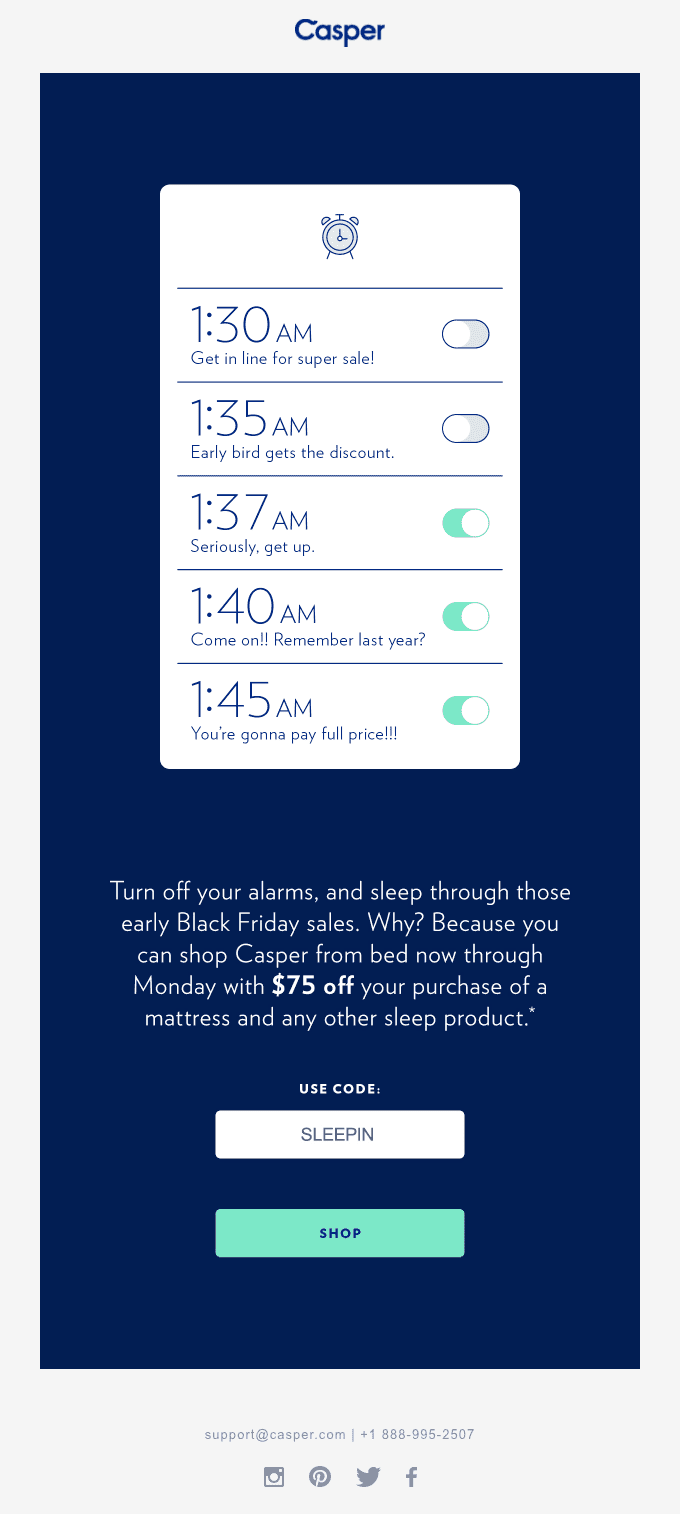
Tip: Run a mobile preview of your email campaign and check how it appears in dark mode. Making small tweaks before sending can prevent formatting issues and ensure your Black Friday emails appear perfectly on every device.
6. Create the Perfect Subject Line
Your subject line is the first thing subscribers notice during Black Friday, when inboxes are crowded. To stand out, focus on clarity, value, and creativity.
Key tips for standout subject lines:
⭐
Highlight the deal: Discounts, BOGOs, or exclusive offers should be front and center.
⭐
Add personalization: Include a name or location to make it feel relevant.
⭐
Use emojis strategically: A well-placed emoji draws attention without clutter.
⭐
Spark curiosity: Clever wording or teasing an exclusive offer encourages opens.
Example:
●
Playful: “Black Fri-YAY! Your favorites are 50% off 🎉”
●
Personalized: “[First Name], don’t miss these Black Friday deals!”
●
Exclusive: “VIP Access: Early Black Friday savings start now”
●
Savings-focused: “Up to 50% Off—Shop Before It’s Gone!”
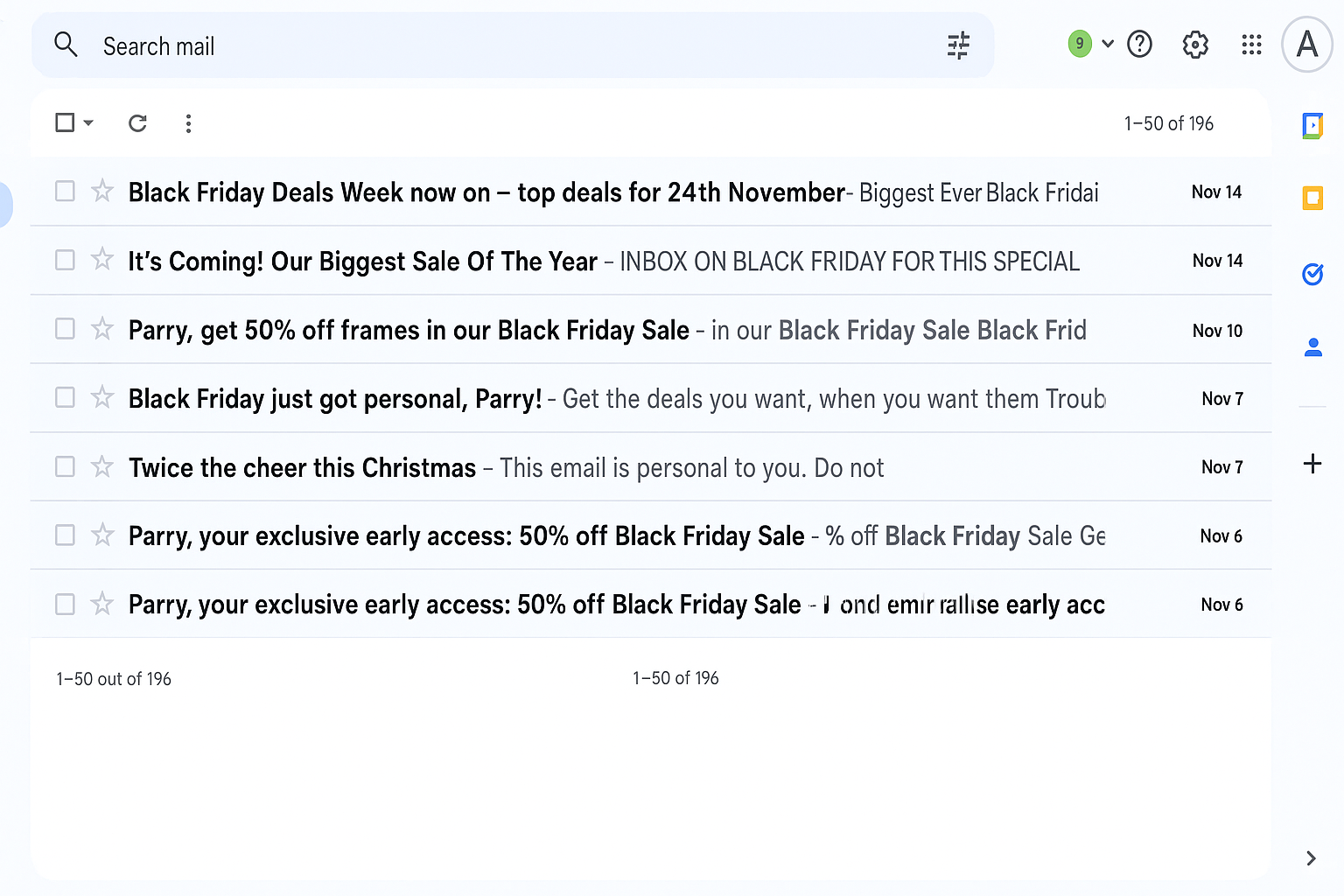
Tip: Don’t forget the preheader text. It’s like a second subject line, use it to reinforce your offer and boost opens.
A/B Testing for Subject Lines
A/B testing helps you figure out which subject lines get the most opens. Here’s how to do it:
●
Pick one element to test: Change only the subject line. Keep everything else in the email the same. This shows exactly how the subject line affects opens.
●
Send to a small segment: For example, Version A goes to 25% of your list and Version B to another 25%.
●
Measure performance: Check open rates to see which version grabs more attention. If testing other elements, you can also track clicks.
●
Send the winner: Use the higher-performing subject line for the rest of your audience.
●
Save for future use: Keep a record of winning lines that can inspire or be reused in future campaigns.
Tip: Run tests early on smaller segments so you can optimize before the big Black Friday send.
7. Schedule Your Email Sending Timing
Once your email is ready, choose the send time. Perfect timing boosts opens, clicks, and sales, especially during Black Friday and Cyber Monday (BFCM).
Best practice for sending at the right time:
●
Test different times: Send emails on different days and at various hours to see when your audience engages most.
●
Utilize analytics tools: Email Marketing Providers like Mailchimp, Klaviyo and Moosend provide insights to help you determine the optimal send times.
●
Consider your audience: Schedule emails based on their time zones and daily routines to reach them when they are most likely to check messages.
Plan your emails around the sale:
●
Countdown emails: Send a teaser a few days before the sale to build excitement.
●
Deal emails: During the sale, highlight key offers or popular items.
●
Follow up: After the sale, send reminders, shipping updates, or related offers to keep customers engaged and informed.
Tip: Schedule emails early to keep campaigns on track and free your time for business or holiday breaks.
8. Implement Email Automation Workflows
Automation scales your email marketing and ensures subscribers get timely, relevant messages.
How automated email series work:
⭐
Triggered messages: Emails are sent based on customer actions (or inactions), such as browsing a product, leaving items in a cart, or completing a purchase.
⭐
Onboarding sequences: Welcome new subscribers to your brand through a structured series of welcome emails that provide guidance, resources, or relevant information.
⭐
Post-purchase follow-ups: Share tips, related products, or reminders to enhance the customer experience.
⭐
Holiday campaigns: Streamline seasonal promotions like Black Friday or Christmas with scheduled, automated emails that engage your audience without extra effort.
Example:
A brand like Warby Parker could automate its emails so that:
1.
A new subscriber receives a welcome email introducing Warby Parker’s eyewear collection.
2.
If they browse a specific frame style, a follow-up email highlights customer reviews or accessories for that frame.
3.
After purchase, an email with care instructions or style tips is automatically sent.
Each step is triggered automatically, ensuring timely, relevant communication without manual effort.

Tip: Define clear triggers (the specific user actions or conditions that start an automated email), timing intervals, and objectives for each stage of your automation workflow. This ensures every message is timely, relevant, and contributes to your overall engagement goals.
9. Strengthen Your Email With Omnichannel Support
Email remains the core of your BFCM campaigns, but supporting channels can help boost engagement and conversions. Channels like SMS, push notifications, or social reminders should be used to enhance your email campaigns.
How it works:
●
SMS reminders: Send short, timely updates highlighting limited-time offers featured in your emails.
●
Push notifications or app alerts: Reinforce deals for subscribers who engage through your mobile app.
●
Social media teasers: Promote sign-ups for your email list or highlight offers that drive traffic back to your emails.
Example:
A brand like Allbirds could send a BFCM email showcasing a seasonal shoe bundle. Subscribers might then receive an SMS reminder about a limited-time discount, while social posts encourage sign-ups for exclusive email offers. Coordinating these channels ensures subscribers engage with your email content across all channels where they interact with your brand.
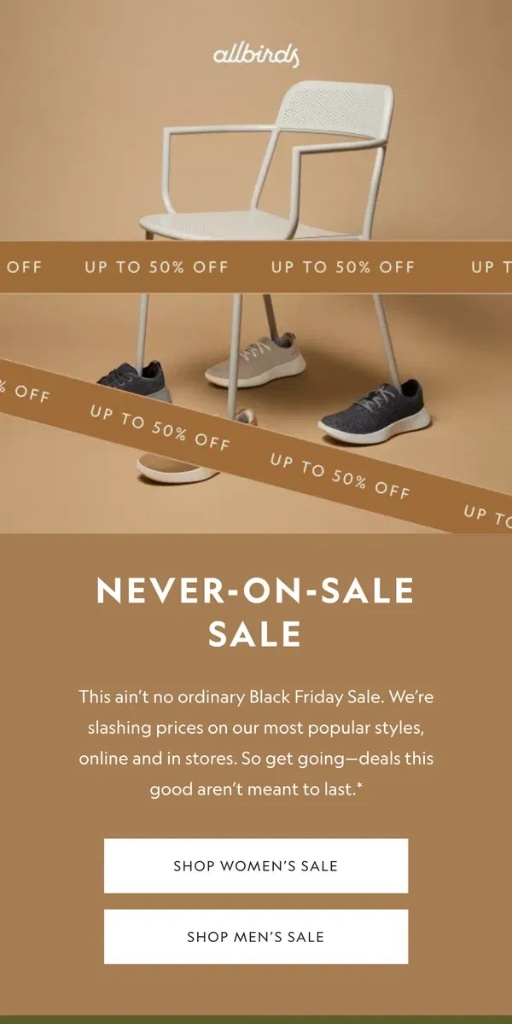
Tip: Use supporting channels to enhance your email campaigns and track their performance. Focus on channels that drive engagement and conversions, while keeping email as the primary communication channel.
10. Prepare for Post-BFCM Sales
The days after Black Friday and Cyber Monday are still an opportunity to drive revenue and maintain engagement. Planning post-BFCM emails ensures you continue connecting with subscribers and maximize overall sales.
How to approach post-BFCM campaigns:
⭐
Follow-up offers: Highlight extended deals, leftover inventory, or complementary products to encourage more purchases.
⭐
Thank-you emails: Show appreciation for purchases and include recommendations for future products.
⭐
Re-engagement campaigns: Target subscribers who didn’t open or click BFCM emails with tailored messages or special incentives.
⭐
Segmented messaging: Group customers by purchase behavior or engagement level for more relevant post-BFCM emails.
⭐
Review and feedback requests: Encourage buyers to share product reviews to boost trust and provide social proof for future campaigns.
Example:
A brand like Glossier could send a thank-you email after BFCM purchases, including tips for product use and highlighting complementary skincare or makeup items. Subscribers who didn’t purchase might receive a “last-chance” email featuring remaining deals or special discounts. This approach keeps customers engaged and encourages additional conversions after the main sales period.
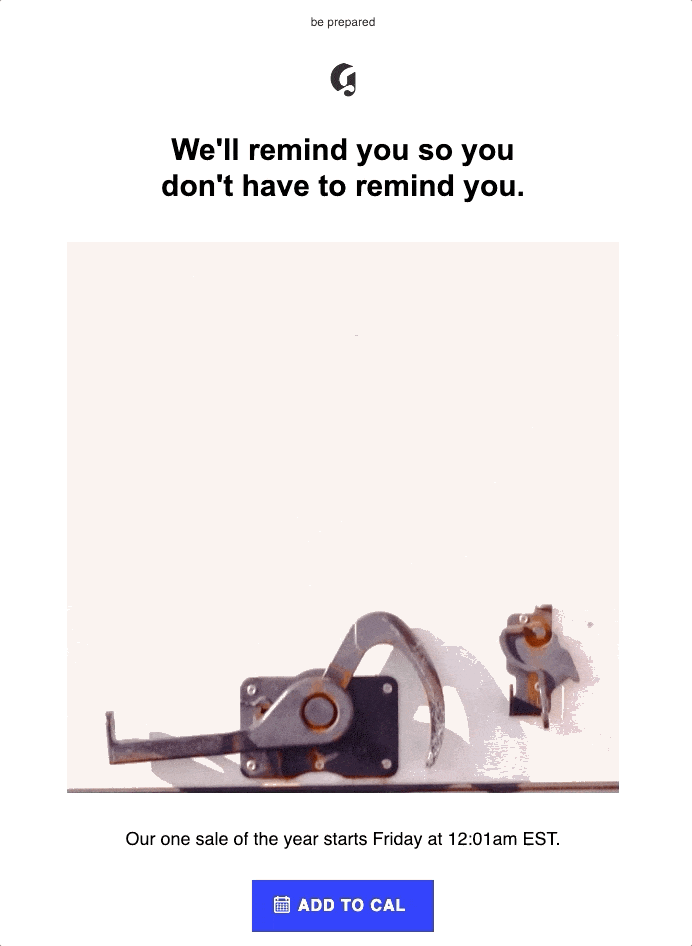
Pro Tip: Schedule post-BFCM emails in advance and send them immediately after the sales period. Timely, relevant campaigns help maintain engagement, encourage repeat purchases, and maximize ROI.
Bottom Line
Black Friday is highly competitive and rewarding for marketers. Success demands more than big discounts; it needs strategic planning, ongoing optimization, and strong audience insight.
A successful Black Friday email strategy starts with preparation. Clean and verify your list, segment subscribers, and refine offers to improve deliverability and engagement. Mobile-friendly designs, well-timed sends, and automated workflows help your campaigns reach the right audience at the right moment with relevant messages.
Supporting channels such as SMS or social media can complement your Black Friday and Cyber Monday (BFCM) campaigns, but email provides a direct, measurable, and highly personalized way to drive conversions.
The work continues after the sale. Post-BFCM emails, thank-you messages, re-engagement campaigns, and follow-ups help sustain momentum and nurture long-term customer relationships.
When your entire email campaign is focused and aligned from deliverability to design and every step reflects your goals, Black Friday becomes more than a sales event. It becomes a powerful opportunity to build both customer loyalty and long-term brand success.
